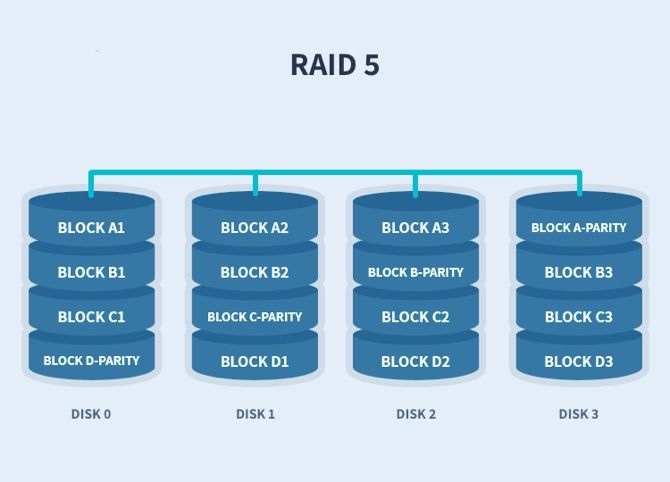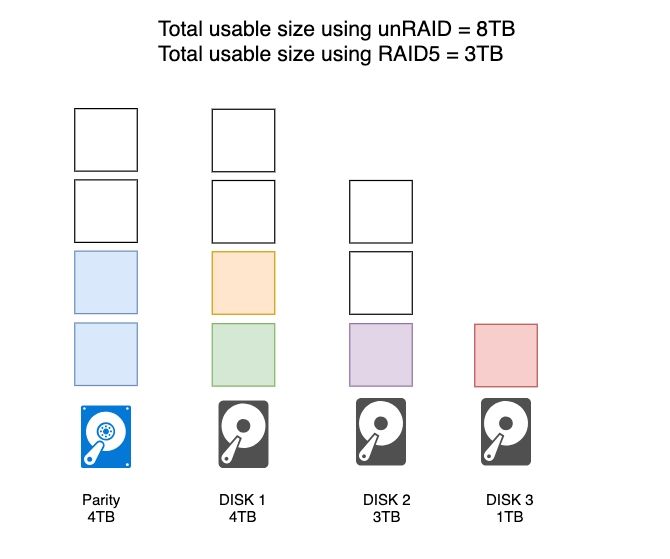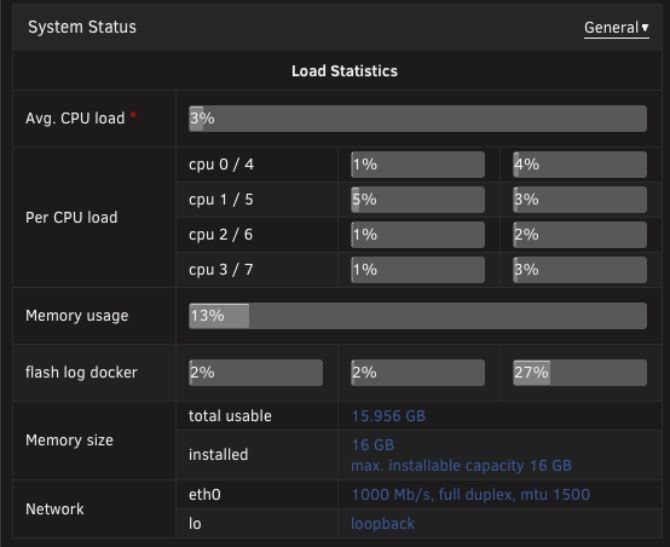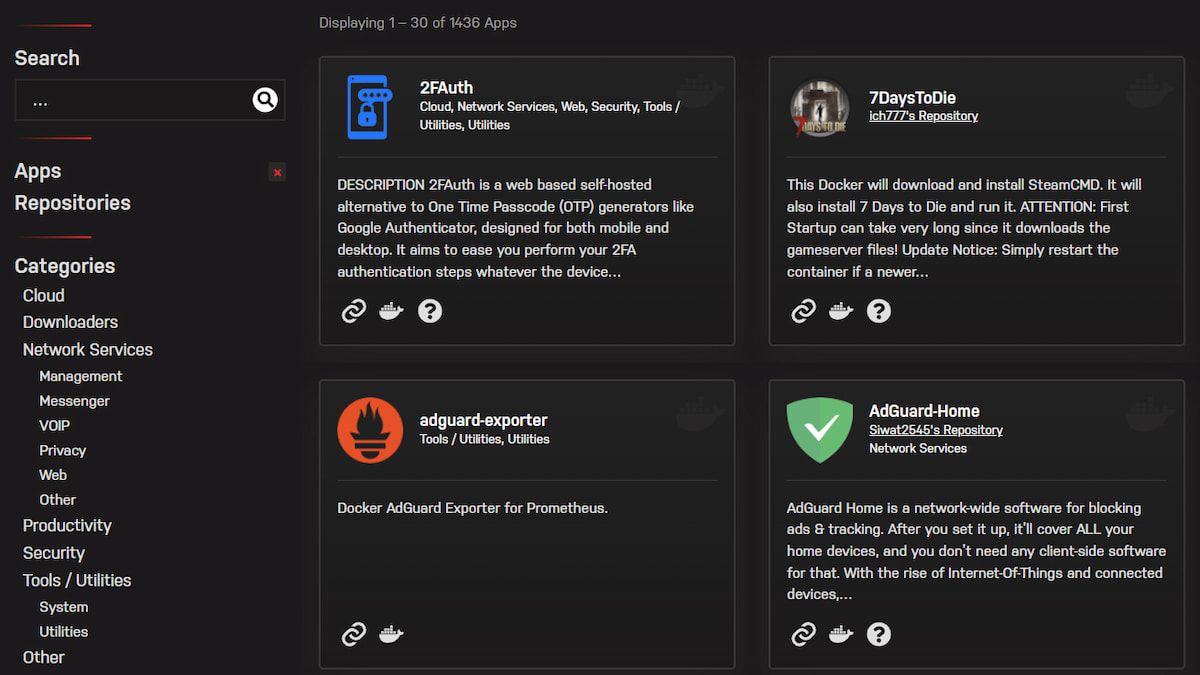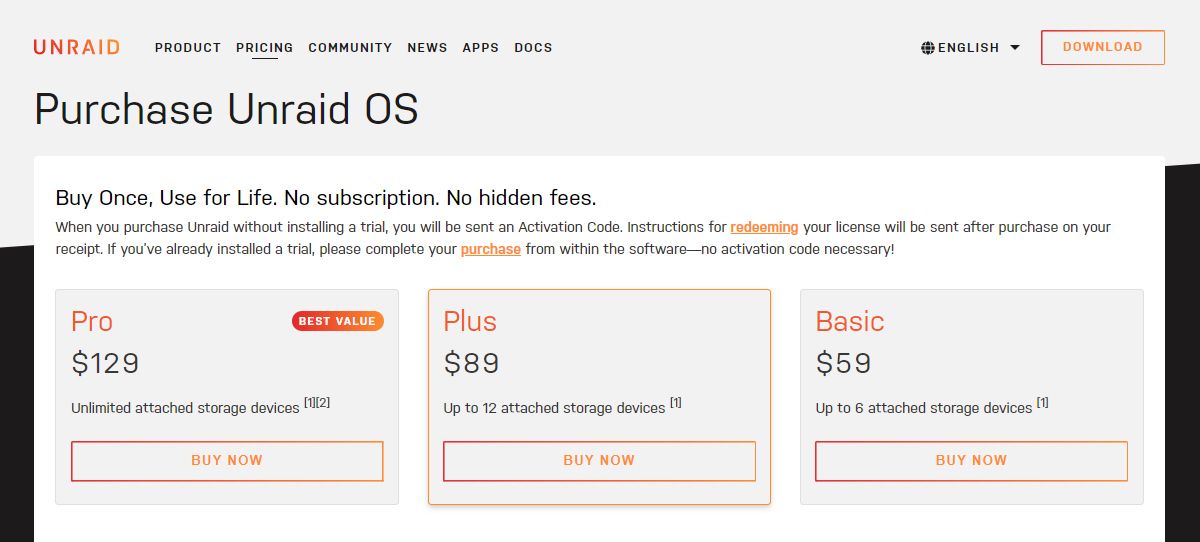Unraid is one of the operating systems used by some of the biggest names in the tech YouTube industry, such as MKBHD and LinusTechTips. But what makes it so unique?
In this article, we'll cover Unraid's unique way of storing data and why it's so efficient. We'll also cover some of the other core features that make it the best home NAS and media server.
What Is Unraid?
Unraid is a Linux distribution meant to give you complete control over your hardware. It primarily targets heavy data users who want complete control over their data, apps, and media.
Unraid can assist you in quickly storing and protecting your data, running any program via an application server, and quickly creating virtual machines. If you're wondering why Unraid and not others, then here are some reasons to make you fall in love with it.
1. Unraid Keeps Your Data Safe
Unraid is unlike traditional RAID for a few reasons. In most RAID cases, when you write a file to a RAID array, more than one disk will spin up, and data is striped across several drives. So even a single file could exist on more than one drive.
Because RAID uses more than one drive to read and write data, there is a performance benefit. RAID also offers a degree of safety. RAID5 can sustain the loss of a single drive, with RAID6 able to cope with the loss of two drives.
RAID is still susceptible to catastrophic failure. If you were to lose two drives in a RAID5 array, you might not be able to get any of your data back. This is because the entirety of the data is dependent on the other disks. If you took out a single drive from a RAID5 array and plugged it into a computer, you won't be able to see anything meaningful because the data is striped.
Another consideration with RAID is that the smallest drive limits the size of the array. This can limit how you can upgrade the size of a RAID array. Additionally, it may not be possible to add a single drive and increase the size of the array.
Unraid's Storage Method
A network share in Unraid can span multiple disks, but it manages the data quite differently compared to traditional RAID. Unraid can be configured to have up to two parity drives. Similar to traditional RAID, this will prevent data loss if up to two drives die, keeping your data safe.
When you write a file to a share in Unraid, only a single disk spins up along with the parity disks to write the data. So a single file will always exist only on a single drive. Because the data isn't striped across multiple drives, you can take a single drive in an Unraid array, plug it into a computer, and see what was on that drive.
There is a trade-off with storing the data in this method in that the performance for reading and writing data is limited to the speed of a single drive. However, Unraid mitigates this by allowing you to use an SSD as a cache drive.
In Unraid, if one of your disks had to die, you could plug in another drive, and it would rebuild the data on that drive. However, if you were to lose more than one drive, you could still plug the remaining drives into a computer to retrieve what's there.
This gives Unraid the edge in keeping your data safe.
2. Unraid Is Efficient
In a direct Unraid vs Raid comparison, Unraid may not be as performant as traditional RAID, but it's far more efficient. There is a massive reduction in power consumption because all the drives aren't spinning to read and write data.
Unraid is also efficient in how you can expand the size of the array. You can add a drive of any size, and it will increase the size of the array by that size, even if it doesn't match the size of the other disks. As long as you ensure that your parity drive is equal to or larger than the biggest drive in your array, your data will be safe.
The base configuration of an Unraid server requires only 2GB of RAM and a 1GHz processor. At idle, barely any RAM or CPU is used. The above image shows resource usage on a server with an Intel i7-4770 processor and 16GB of RAM.
Under regular usage, like a video playing and a file being written simultaneously, Unraid still barely bats an eye. This shows how efficient a basic Unraid performance is at managing its resources.
3. Virtual Machine Support
You may have found yourself in a situation where you need a PC and a NAS but just have the budget for one of them. Well, Unraid allows you to have your cake and eat it too!
Fortunately, Unraid OS has native support for virtualization, so you can use any remaining resources your computer has to run a virtual machine. Unraid also has native support for IOMMU groups.
These allow you to give a virtual machine direct access to a device connected to Unraid, such as a GPU. This means you could create a virtual machine used for hardcore gaming and have near-bare-metal performance as if it were running directly on your hardware. Unraid makes it possible to start your home lab or get into gaming using a single machine.
4. Unraid Has Excellent Application Support
Unraid has been built from the ground up with Docker support. In a nutshell, Docker is a container platform that allows applications to run in a secure environment of their own. It's currently the most widely adopted container platform by millions of developers globally, and it provides Unraid with access to thousands of apps.
Fortunately, many vendors provide Docker versions of their apps. This is important because it means you won't have to rely on an independent developer to provide updates to future versions of the software, as the companies themselves will maintain them.
Having Docker support also means you're not locked into any proprietary applications. Many popular apps are already available, such as:
- Plex
- Emby
- OpenVPN
- Owncloud
You can turn your NAS into a powerful media server, private cloud-based storage, or file sharing downloader with just a few clicks. Docker on Unraid works seamlessly and provides an unparalleled level of versatility.
5. Your Hardware, Your Budget
One aspect puts people off Unraid: there is a cost attached to it. But it is excellent value for money, and there is a 30-day trial to try it for yourself and create your own Unraid NAS server.
Moreover, Unraid has an excellent community forum that you can use for both support and advice on your build.
One of the most significant advantages of Unraid is that it runs on regular PC hardware. There's no limit to how powerful you'd like to make your build as long as you've got the budget to match. If you require a NAS without virtualization or resource-intensive apps, you may even be able to repurpose an older computer that you own.
Off-the-shelf NAS systems like QNAP and Synology can be difficult to upgrade or source replacement parts. This is another advantage of using regular PC parts, as they're more widely available.
You can even build a custom machine with used parts to squeeze a more powerful NAS out of your budget. Just be sure to check Unraid's hardware requirements and compatibility before making your purchases.
There is still much more to add to the list of Unraid benefits. You get a simplified and intuitive interface, complete control over your storage, backup choices, data sharing, etc.
Not Sold on Unraid? Check Out FreeNAS
If you're still not sold on Unraid but still require NAS capabilities, you can create a RAID array natively on Linux.
Besides that, if you're looking for a more business-oriented NAS solution, you should also check out FreeNAS. And finally, you can host a Plex server on a NAS.


